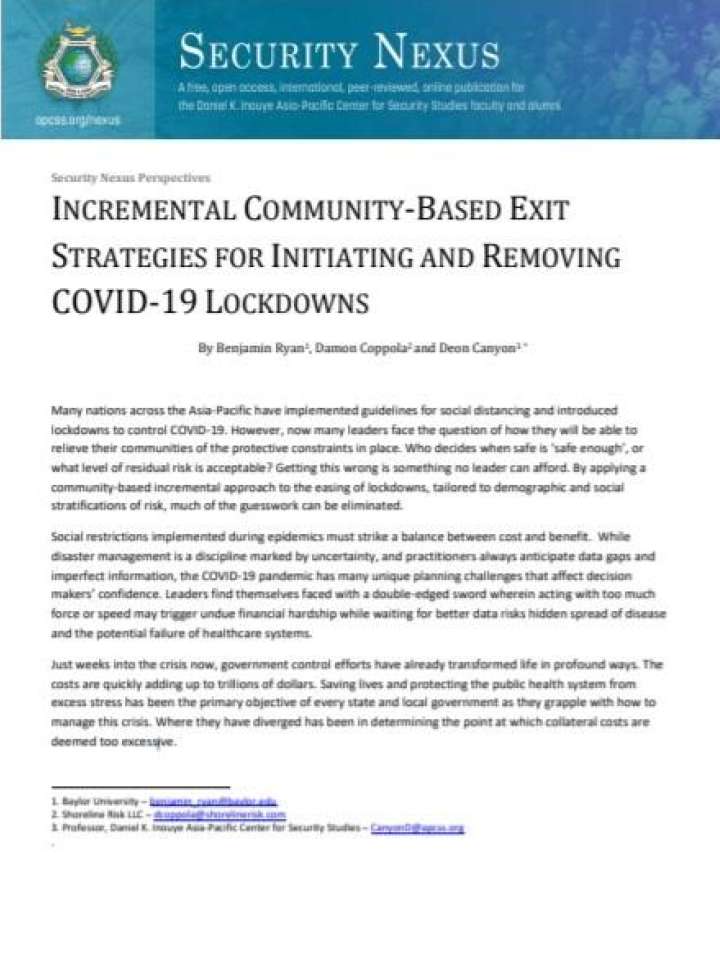Incremental community-based exit strategies for initiating and removing COVID-19 lockdowns
Many nations across the Asia-Pacific have implemented guidelines for social distancing and introduced lockdowns to control coronavirus disease 2019 (COVID-19). However, now many leaders face the question of how they will be able to relieve their communities of the protective constraints in place. Who decides when safe is ‘safe enough’, or what level of residual risk is acceptable? Getting this wrong is something no leader can afford. The authors make the case that by applying a community-based incremental approach to the easing of lockdowns, tailored to demographic and social stratifications of risk, much of the guesswork can be eliminated.
Lessons learned from previous epidemics, including the outbreaks of Severe Acute Respiratory Syndrome (SARS) in 2003 and Middle East Respiratory Syndrome (MERS) in 2015, revealed that incremental risk-based measures were effective at controlling an epidemic without having to completely shut down a society. Social restrictions implemented during epidemics must strike a balance between cost and benefit. While disaster management is a discipline marked by uncertainty, and practitioners always anticipate data gaps and imperfect information, the COVID-19 pandemic has many unique planning challenges that affect decision-makers’ confidence.
Explore further
